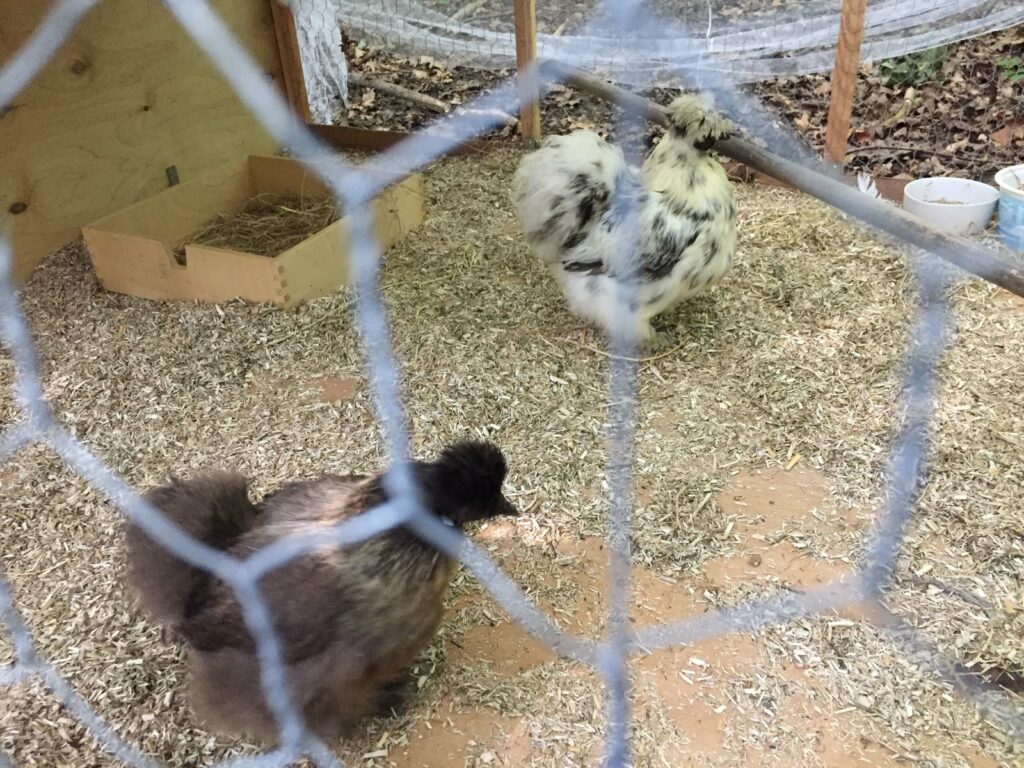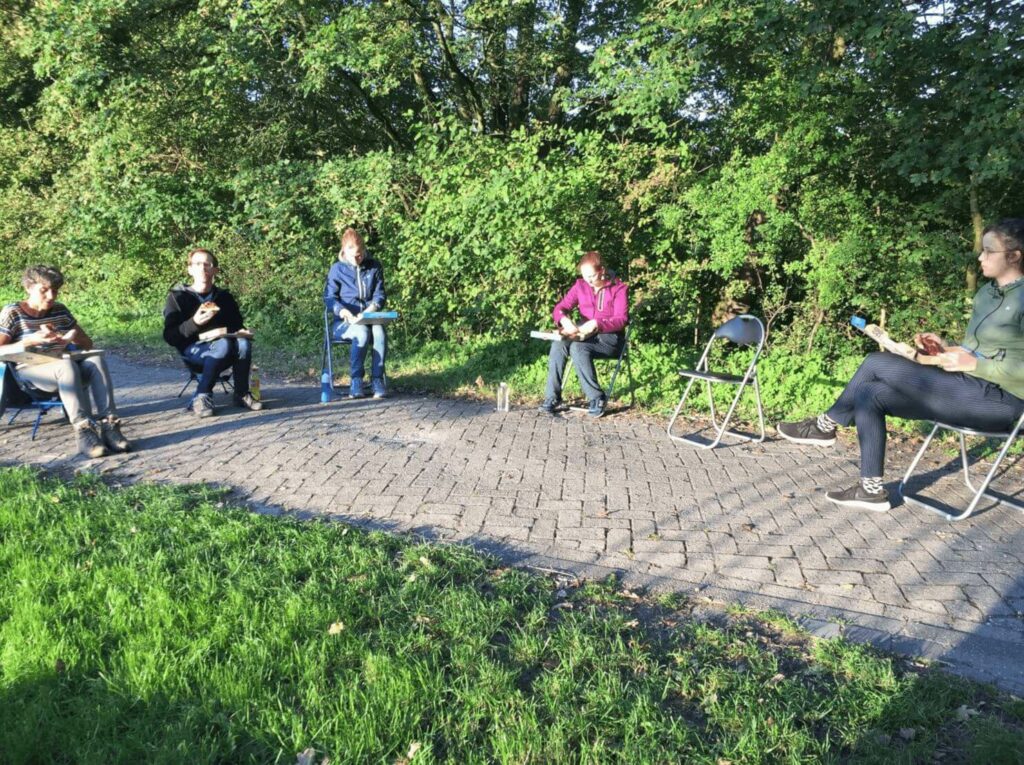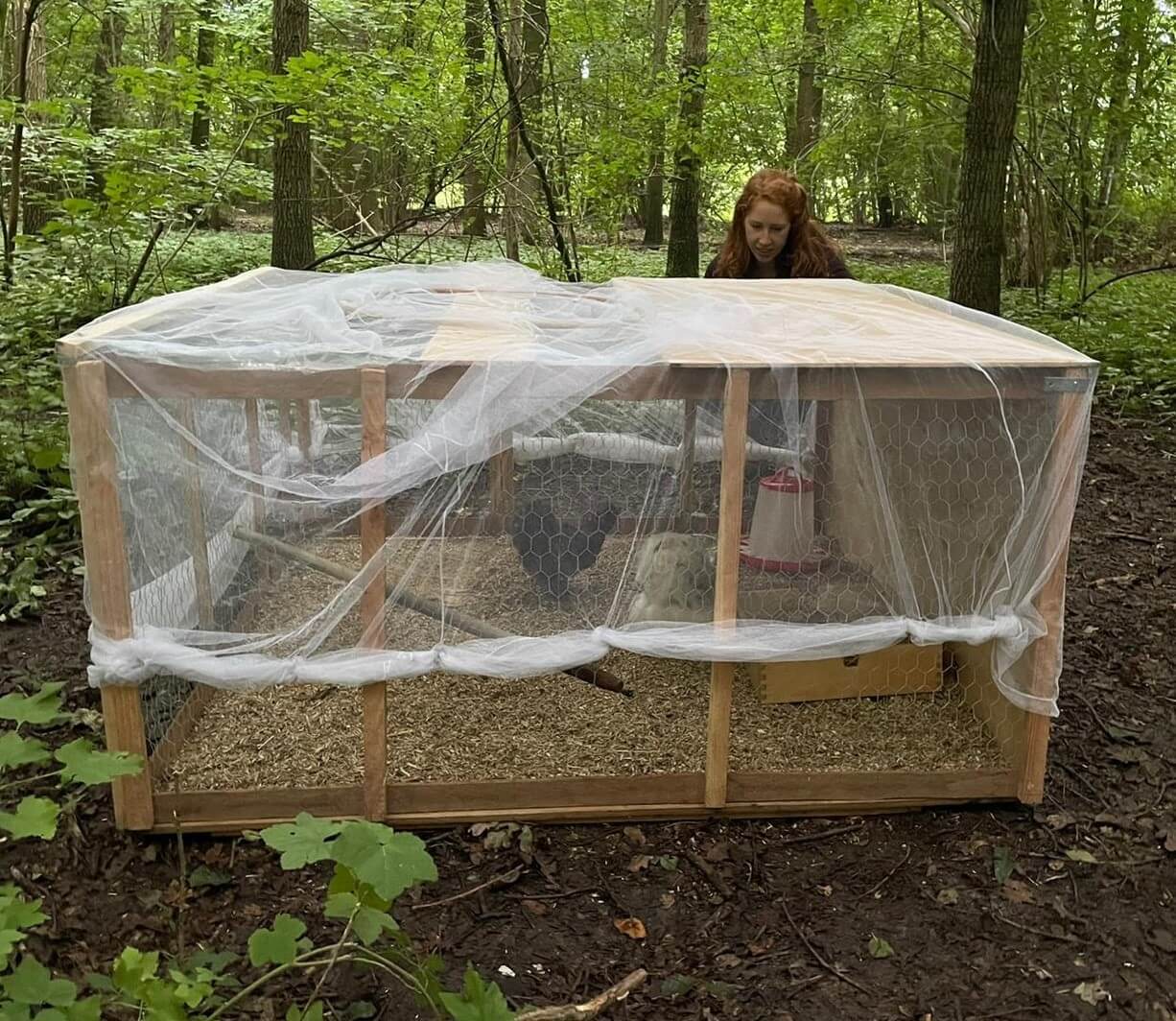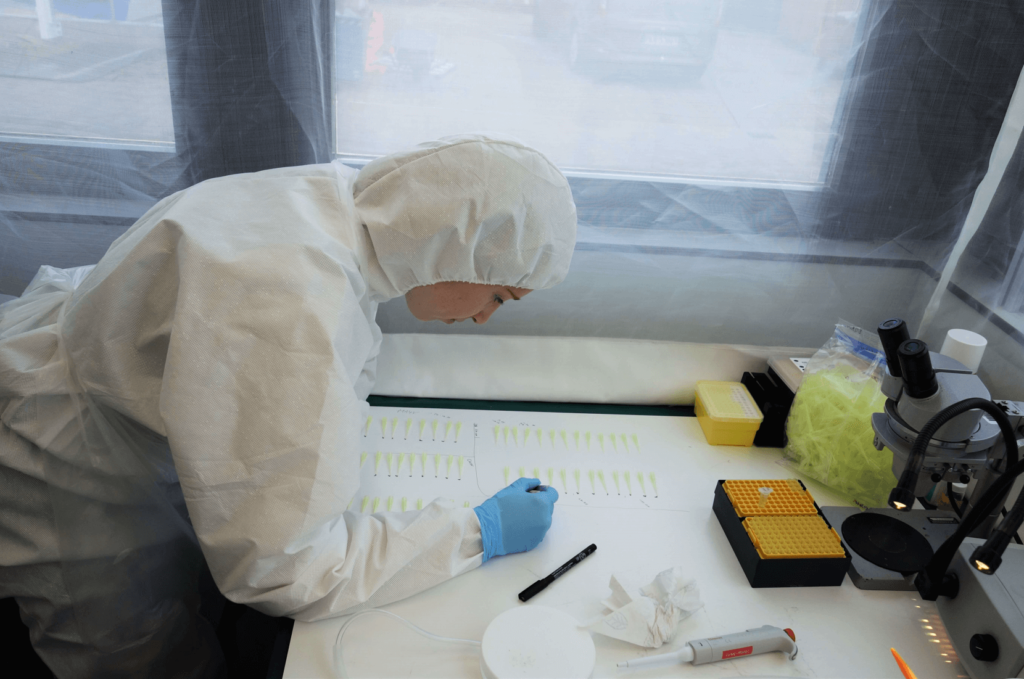Temperatures are rising and days are getting longer, this means it is summertime! Although this is the time of the year that a lot of people look forward to, it is also the time of the year when annoying mosquitoes are bothering us again.
Mosquito season is for us, researchers, a really exciting time. During this time of the year, we can go out into the field to do all kinds of behavior studies on mosquitoes and catch them for further research in the laboratory. This is exactly what I have been doing for two summers in Lelystad and which I would like to describe in this blog.
My name is Charlotte Linthout and I am a PhD candidate at the One Health Entomology Group at Wageningen University and Research. During the summers of 2020 and 2021, I have been collecting a lot of Aedes japonicus mosquitoes in and around the community gardens of Lelystad. Aedes japonicus or “Asian bush mosquitoes” have been introduced in Lelystad in 2013 and are an established species ever since. Besides being aware of its presence in this area, we actually know very little about this mosquito species and this is exactly where field studies come into the picture.


Host-seeking behavior studies in Lelystad
I was very curious about the Asian bush mosquito’s activity throughout the day and throughout the season in Lelystad. To have a better understanding of these topics, a lot of volunteers were very kind to help me out in the field around the community gardens in Lelystad doing ‘human landing catches’. The volunteers acted as ‘live bait’ to attract and catch these mosquitoes landing on their exposed arms and legs. Three ‘hotspot’ locations were chosen where we, before the experiment started, confirmed the presence of Aedes japonicus mosquitoes. Then three groups of two volunteers each were visiting the allocated locations every hour from sunrise to sunset for 15 minutes.
By repeating this experiment for a couple of days in June, August, and September, we not only had an idea of the activity of these mosquitoes during the course of a day, but we also had insight into which time during the season these mosquitoes were most abundant.

Not only is it interesting to look into the biting behavior of these mosquitoes on humans, but it is also fascinating to look at their interest in other animals’ blood. In a next study, I was curious if the Asian bush mosquito would also take a blood meal on birds, and more in particular on chickens. “Why birds?” I hear you wondering. Well, to understand this, I first need to take you through a short complicated story. As our group is focusing on One Health in the Netherlands, vector-borne diseases are a hot topic for us. For my project, I research mosquito-borne diseases, such as West Nile virus. This virus was first reported in the Netherlands in 2020 when a West Nile-positive bird was detected. It is a virus that is usually circulating between birds and mosquitoes and every now and then, humans and horses can also become infected. As they cannot complete the transmission cycle of the virus, they are also known as dead-end hosts. In order to understand if the Asian bush mosquito could contribute to the spread of West Nile virus in the Netherlands, it is therefore important to know if these mosquitoes are also interested in taking a blood meal on birds.
This is exactly why, in the summer of 2021, I constructed a chicken coop in my back yard at home and transported it to Lelystad to use in my field study. Once the chicken coop (of which the measurements met the conditions of the Dutch animal welfare regulations) arrived in Lelystad, a woman owning a small community garden was so kind as to lend me two of her chickens for four days, so I could look into this research question.

The chicken coop adventure
When the chicken coop was fully operational in the field, with chickens inside, I quickly noticed that I could not find a lot of blood-fed mosquitoes in the coop. So I started wondering if I actually had a good set-up for collecting mosquitoes that took a blood meal on the chickens. Questions like “Do mosquitoes find their way into the chicken coop?”, “Can mosquitoes even sense that animals are sitting inside?” and “Can I actually catch blood-fed mosquitoes after they have taken their blood meal?” and so on, were popping up. There was only one way to find out the answers to these questions… taking the place of the chickens in the coop and seeing what happens. As I knew from my previous study already, humans are very attractive to Asian bush mosquitoes. Therefore, if my chicken coop set-up was working, the mosquitoes should be able to sense that I am sitting in the coop. They should be able to find their way in and I should be able to catch the mosquitoes landing on me. No sooner said than done, I sat in the coop myself for an hour… in a very cramped position as I am 1.75 m myself and the cage, not any higher than 90 cm. But the back- and neck pain afterward definitely paid off as I collected as many as 48 mosquitoes in that one hour, indicating that my set-up was working just fine! Things we do for research…
With this knowledge in the back of my head, I continued the same set-up with the chickens and collected only six Aedes japonicus mosquitoes over the course of four days. Truth to be told, the chickens were definitely feasting more on the mosquitoes than the other way around!


Vector competence studies in the laboratory
As I mentioned above, our group also works on vector competence studies. Vector competence is a way to describe the ability of a vector, in this case, a mosquito, to transmit a virus to the next host. In order to undertake these studies, we need to have mosquitoes and infect them with a virus in the lab. In Wageningen, we have a very secure lab where we can work safely with these kinds of viruses, so we can protect both ourselves and the environment. For my study, I investigated the vector competence of Aedes japonicus mosquitoes from Lelystad for West Nile virus. Therefore, in Lelystad, I had to collect mosquito eggs and larvae to bring back to Wageningen, where they could reach the adult phase of their life cycle. The collection method for eggs and larvae is shown in the pictures. Using small landing nets, we were “fishing” for mosquito larvae in rain barrels and Styrofoam blocks in oviposition traps were used to collect Aedes japonicus eggs.

Once I collected enough female Aedes japonicus mosquitoes, I provided them with a West Nile virus-infected blood meal in our secure laboratory and after 14 days, I could check for the presence of virus in their saliva in order to conclude if they are suitable vectors for this virus.
All these studies combined could give us a better understanding of the role of the Asian bush mosquito in the transmission of West Nile virus in the Netherlands. If you would like to know more about the results of this study, I suggest keeping an eye out for further updates on our website 😊.